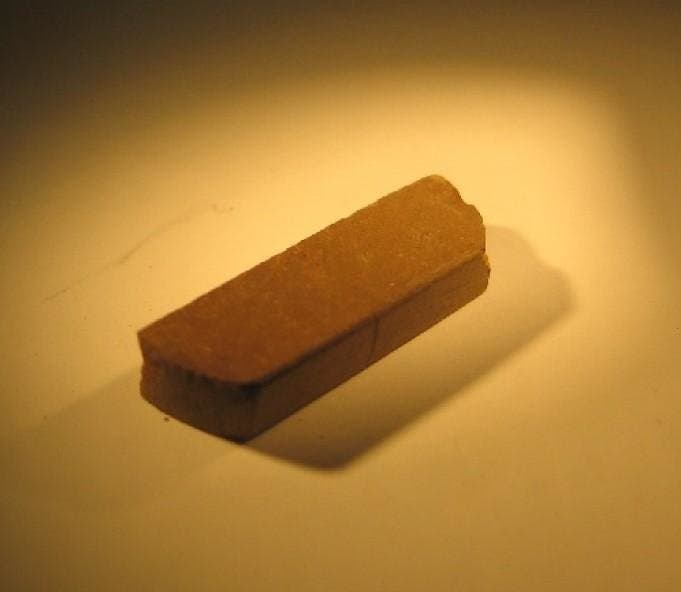Mars colonizers might use the planet itself to make their homes — a new technique has been developed which can turn Mars’ reddish soil into bricks without the need for ovens or any extra ingredients. All you need to do is press hard enough on it.

Image credits Jacobs School of Engineering / UC San Diego.
We’ll need to design a new range of materials if we’re to colonize space. Not only because they need to resist the vicissitudes of whatever planet or body we’re aiming to settle on, but also to save on cash — shuttling things through space is really expensive. Mars is the likely candidate for our first colony.
The idea of using its soil to build the first homes up there isn’t new. But previous technologies were reminiscent of traditional brick-making back on Earth, requiring brick kilns (nuclear-powered, of course), or involving mixing the material with chemical mixes to turn in-situ organic components into binding polymers.
It seems that we don’t have to do any of those things — making bricks on Mars is as easy as compacting soil. The surprising technology was developed by a team of engineers at the University of California San Diego, who initially started work with Mars soil simulant to try and reduce the number of polymers required in brick-making.
To their surprise, they found out that only two steps are needed to turn the red dirt into a resilient building material. First, you have to place the soil in a flexible container (the team used a rubber tube). Then, you press it really hard — for a small sample, roughly the same pressure generated by a 10-lb hammer droped from a height of one meter is enough, said Yu Qiao, a professor of structural engineering at UC San Diego and the study’s lead author.
“The people who will go to Mars will be incredibly brave. They will be pioneers. And I would be honored to be their brick maker,” Qiao, added.
Their process results in small, round soil pallets that are about one inch tall that can later be cut into individual bricks. It likely all comes down to the iron oxide in the soil, the team says. Qiao and his team studied the simulant’s structure with various methods and found that the iron oxide particles coat the larger basalt bits in the Martian soil. This is the same substance that lends Mars its shade of red and forms flat particles with clean facets which readily bind together under pressure, basically performing the same task as any added polymers would.
When testing the bricks’ strength, the team was surprised to find that they were stronger and more resilient than steel-reinforced concrete even without any kind of rebar. Which is a lot. Quao’s team says their method may be compatible to additive manufacturing, meaning astronauts wanting to build a structure would simply have to lay down a layer of dirt, compact it, lay another layer and so on until they’re done.
Next on the list, they say, is to tailor the production method to create bigger bricks.






